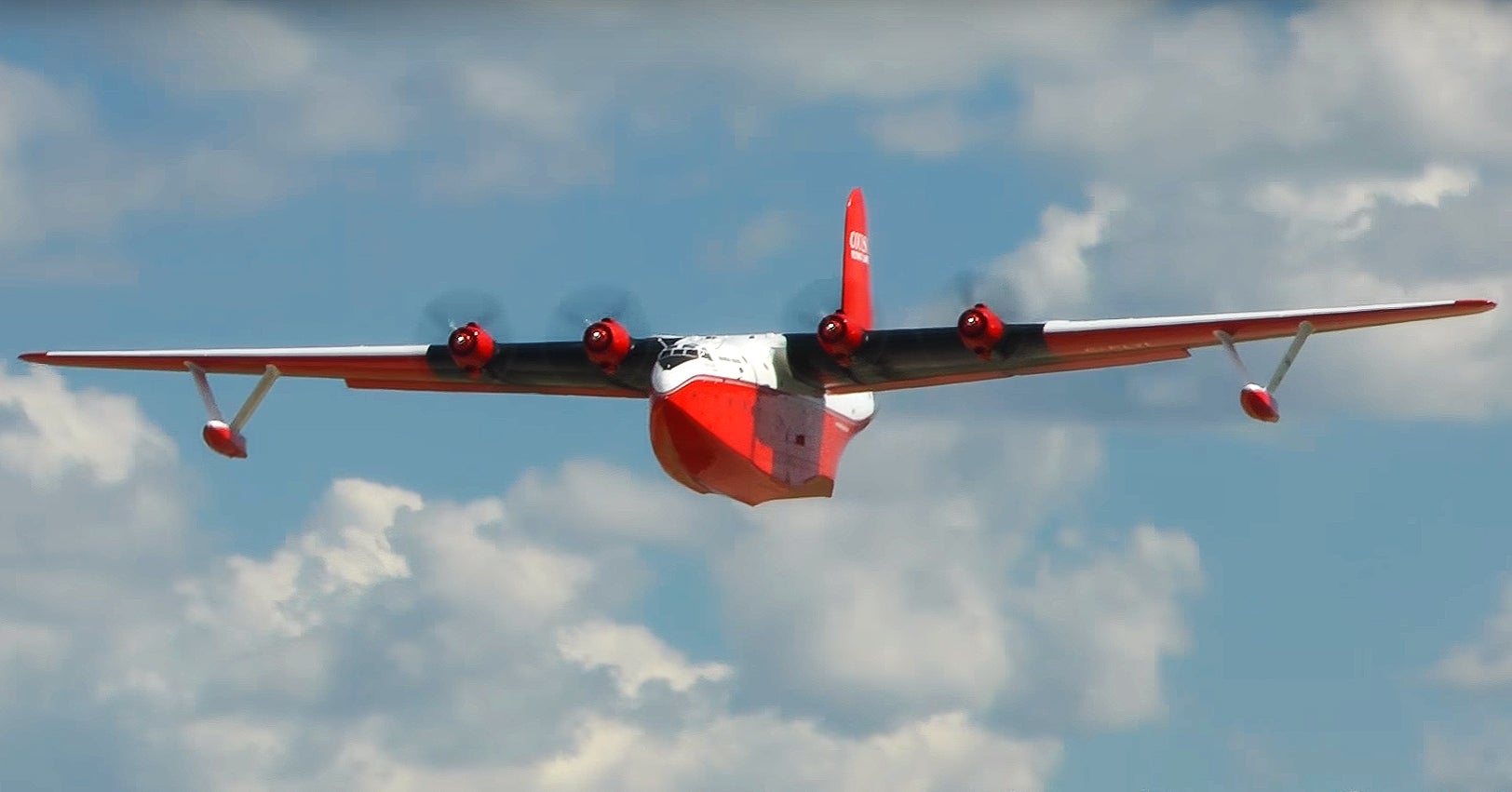Just as China is rolling out its big new multi-role amphibian, the largest flying boats ever flown operationally—the World War II-era Martin JRM Mars—are being put up for sale. The aircraft served the US Navy until the mid 1950s, after which they were acquired as surplus by a Canadian company that modified them for firefighting operations. After already performing decades of air tanker service, they were bought by Canada’s Coulson Flying Tankers Inc., in 2007.

Originally, the Mars, which has a wingspan of 200 feet and a max takeoff weight of 165,000 pounds, was designed as a cargo transport and patrol aircraft, and was the largest allied seaplane built during World War II. By the time the Mars was in production its patrol mission was dropped and the aircraft were to be used primarily as transports. In total, only seven of the big flying boats were built, with just two surviving today; those are the Hawaii Mars II and the Philippine Mars, both owned by Coulson.

From their picturesque operating base on Sproat Lake, British Columbia, Hawaii Mars II and Philippine Mars flew contracted firefighting contracts for decades. Although in recent years they’ve had trouble finding steady work, even as America’s similar jet-powered Very Large Air Tanker capabilities have expanded.
Yet the Mars can do something their modern successors can’t: they can scoop up massive loads of water on the fly. Skimming the surface of rivers and lakes at 60 knots for about 30 seconds is all it takes for the Mars to pick up 7,200 gallons of water. This capability drastically increases their attack rate compared to tankers that require refills at airfields after each evacuation. Each Mars also has a 600-gallon tank of foam concentrate that can be injected into their water-loads.

The fire season of 2015 was the last time a Martin Mars fought a fire, and that was on a very limited basis. British Columbia Wildlife Service had one of the big tankers under a short-term contract during which the aircraft was used five times on four separate fires. The cost of the contract was $736,000.
In 2015, the Caulson was also contracted to train Chinese test pilots in how to handle a large flying boat. The training was needed in preparation for the flight test program of China’s new AG600. The pilots, who were attending International Test Pilot School, collectively spent 22 hours behind the yoke of Hawaii Mars.
Now, with no contracts to fulfill, the Coulson team brought the Mars to Oshkosh for America’s biggest air show, and as you can imagine, it’s quite the star.



A buyer could step in with hopes of putting the antique flying boats back into firefighting service, possibly using Philippine Mars for parts to sustain Hawaii Mars II more economically. Although, considering Caulson’s view that these boats need a new purpose, this seems doubtful. Additionally, beyond relocating them and their infrastructure, the planes’ business case as firefighting aircraft has proven to be weak at best. This doesn’t mean they’re irrelevant, or even not cost-effective, but the air tanker business is volatile for a number of reasons, including high fixed costs with a very elastic demand along with all the politics and complexities of having government organizations as the sole customer base.
If aircraft are not flying and earning money, they’re very expensive to maintain in a ready or semi-ready state. The fact that the Mars are 70 years old with no existing support base—not to mention that they’re gigantic and operate on water—only makes this scenario much more fiscally treacherous.

Still, someone with deep pockets could purchase the aircraft and convert at least one of them into one hell of a flying adventure palace. For the person that has the super yacht and a Gulfsteam 650, this would be an awesome addition.
Yet another issue, though, is that these aircraft are not amphibians; they depend on water for operations and have to be winched ashore for servicing. This severely limits their servicing flexibility and increases their operating costs. Still, having an antique flying mansion would be pretty amazing.

These last examples of the Martin Mars may be best utilized as promotional tools instead of being stuffed into a museum or put back to work drenching fires. Companies like Red Bull and Breitling have invested heavily in exotic warbirds and antique aircraft as brand ambassadors. The Martin Mars, with its tremendous range, huge scale and sea-side visibility, could travel the world as a flying interactive branding tool. There really is no better aircraft for this type of work, as the Mars can plant itself right in front of the coast cities instead of being relegated to airfields.
We’ll keep an eye on these amazing aircraft, and will let you know where they land.
Contact the author: Tyler@thedrive.com
